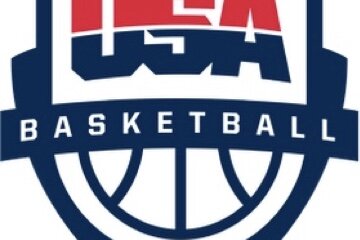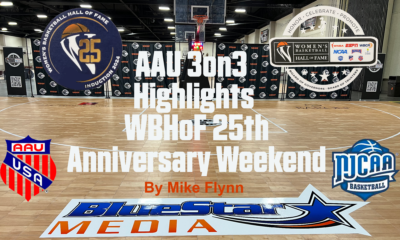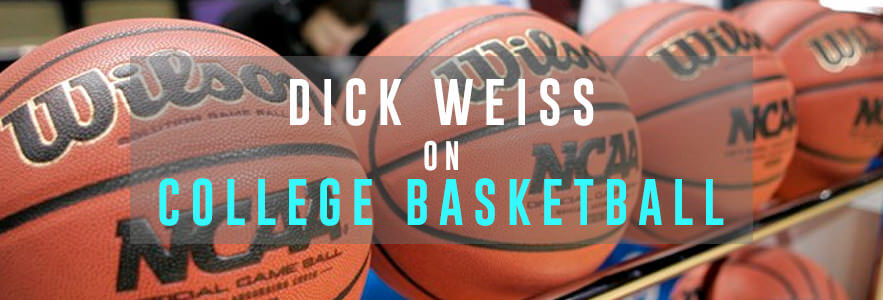PHILADELPHIA– It was so sad to hear about the passing of Dr. Jack Ramsay, the one time St. Joseph’s coach who died in his Naples, Fla. home at age 89 after a 14- year battle with cancer.
This city has produced its share of great coaches. Among them are the late Harry Litwack of Temple, the late Chuck Daly of Penn the late Ken Loeffler of La Salle and former Temple coach John Chaney, and current Philadelphia University coach Herb Magree who, along with Ramsay, are enshrined in the Naismith Hall of Fame. Other elite coaching minds include former Villanova coaches Jack Kraft and Rollie Massimino, former Penn coaches Jack McCloskey and Dick Harter, former St. Joseph’s coach Jack McKinney and Jimmy Lynam and the late, former La Salle coach Tom Gola, who is in the Hall as a player.
But Ramsay, the man who wrote the book, “Pressure Basketball” for his doctoral thesis in education at the University of Pennsylvania that became the bible for coaches teaching the zone press, was the best I ever watched in the Big 5 and my favorite coach of all time. He will always be remembered as one of the best teachers and motivators in the history of the sport.
He coached St. Joseph’s from 1956 through 1966 and built the overachieving, gritty Hawks into a national power with local Catholic League and Public League players like Jimmy Lynam from West Catholic, Tom Wynne and Steve Courtin from St. James, Matt Goukas of St. Joseph’s Prep and Cliff Anderson of Edison, winning six Big 5 championships and leading his overachieving Hawks to 10 post season appearances a spot in the 1961 Final Four. I remember as a young teenager, bursting into tears when I read in the Evening Bulletin that the NCAA had forced St. Joseph’s vacate its third place finish because three of its players were involved in a point shaving scandal.
But Ramsay was resilient and, within five years, he had rebuilt a program to a point where it was ranked pre-season No. 1 by Sports Illustrated before the 1966 season. Ramsay left for the pros after that Sweet 16 season. He took a job as the GM on the Philadelphia 76ers, who won a world championship in 1967 with Wilt Chamberlain and later moved on to become as a head coach with the Portland Trail Blazers, where he won a world championship in 1977, defeating a more talented 76ers’ team with All Stars Julius Erving, George McGinnis and Doug Collins.
“Teams that play together beat those teams with superior players who play more as individuals,” he once said.
That quote accompanies a mural of Ramsay that Trail Blazers coach Terry Stotts had constructed above his desk inside Portland’s arena.
Ramsay coached with the Sixers, Buffalo, Portland and Indiana, winning 864 games in 21 NBA seasons before retiring in 1988 and moving to Naples, Fla. where he became part of the Miami Heat broadcasting team and eventually a lead NBA analyst for ESPN, where he became known for his infallible commentary.
But he will always remain a treasure in our town, a true student of the game and a brilliant basketball mind who had the respect of past and present players alike
Ramsay attended Upper Darby High School and entered the Navy. He graduated in 1942 and joined the Navy as soon as he was old enough and became a frogman in World War II. He trained for the invasion of Japan as part of a demolition team, but the the war ended before he saw action. When he was just 21, the Navy made him captain of a supply ship that patrolled the Pacific ocean and the Marshall Islands. Ramsay attended St. Joseph’s on a basketball as scholarship and graduated in 1949, coaching high school basketball at St. James of Chester, Pa. and the Eastern League before returning to his alma mater.
I will always remember Dr. Jack tossing his plaid sports jacket into the stands at the Palestra after the late Jimmy Boyle hit a shot at the buzzer to beat third- ranked Bowling Green, with its great Hall of Fame center Nate Thurmond, at the fabled Palestra. I still remember watching him coach at the storied gym he loved in 1996 when Steve Donches hit a last second shot to beat Villanova. He was the epitome of the great St. Joseph’s song, “Glory, glory now, the Hawk will never Die.” When I was inducted into the Big 5 Hall of Fame a few weeks ago, he and Jimmy Lynam– my all timie favorite player and one of his former captains– were the first two people I thought about before I gave my induction speech.
I remember watching him conduct a personal clinic during the final four games of the 1977 NBA championship series. And I remember watching him surf the waves off Ocean City, N.J., where he once owned a summer home, when he was in his 60’s.
Dr. Jack was always committed to fitness and used to skip rope after practices just to keep in shape. He once rode his bike halfway across America in a week and became a world class tri-athlete at the age of 70. Until recent years, he would swim a mile a day in the Gulf of Mexico near his Naples home. His daily routine, which he sustained into his 80s, included 100 crunches, 100 push-ups and running as much as four miles a day.
Ramsay battled various forms of cancer – on his left foot, his lungs, his prostate, bladder and his brain – and, as Ramsay said two years ago, “melanomas all over my body.” The cancer went into remission, but returned last spring, and he expressed frustration that it had begun to affect his active lifestyle in recent months. Ramsay lost Jean, his wife of 60 years, to Alzheimer’s disease in 2010. He cared for her for 10 years while her condition deteriorated.
I got to say hi to him when I accompanied Mike Flynn and Jeanine Reynolds to the Naismith Hall of Fame dinner to watch George Raveling be receive the George Bunn award for his contributions to the sport. I got to spend time with time when I went to Hawk Hill this December to see his 1963 team– with Lynam, Courtin and Wynne– be honored at halftime of St. Joseph’s game against Creighton.
He was still mentally sharp and as gracious as ever. His son Chris, who works for ESPN, wrote a touching tribute to him.
I will always remember him from this passage in his book, “The Coach’s Art”: “What t is this game that runs through my mind? It is a ballet, a graceful sweep and flow of patterned movement, counterpoised by daring and imaginative flights of solitary brilliance. It is a dance which begins with opposition contesting every move. But in the exhilaration of a great performance, the opposition vanishes. The dancer does as he pleases. The game is unified action up and down the floor. It is quickness, it is strength; it is skill, it is stamina; it is five men playing as one…It is the solidarity of a single unifying purpose, the will to overcome adversity, the determination never to give in. It is winning; it is winning; it is winning!”
Dick Weiss is a sportswriter and columnist who has covered college football and college and professional basketball for the Philadelphia Daily News and the New York Daily News. He has received the Curt Gowdy Award from the Naismith Basketball Hall of Fame and is a member of the national Sportswriters Hall of Fame. He has also co-written several books with Rick Pitino, John Calipari, Dick Vitale and authored a tribute book on Duke coach Mike Krzyzewski.

Latest Articles
-


Christopher Lawlor
/ 1 day agoSELECTION SATURDAY: USA Basketball U18 Women’s Team is named for AmeriCup tipping on June 17 in Colombia
COLORADO SPRINGS, Colo. – A dozen of the most talented women’s basketball players from...
-


Christopher Lawlor
/ 7 days agoBREAKING: Lisa Bluder steps down as Iowa women’s head coach after leading Hawkeyes to back-to-back Final Fours; Jan Jensen inherits position
IOWA CITY, Iowa – In a shock to some, Iowa women’s head coach Lisa...
-


Christopher Lawlor
/ 1 week agoTwenty-Six Athletes Expected to Participate in USA Basketball Women’s U18 National Team Trials that begin on May 15
COLORADO SPRINGS, Colo. — USA Basketball announced 26 athletes expected to participate in the...
-


Basketball
/ 2 weeks agoAAU 3on3 Highlights WBHoF 25th Anniversary Weekend
KNOXVILLE – The 25th anniversary weekend celebration of the Women’s Basketball Hall of Fame...
By Mike Flynn



